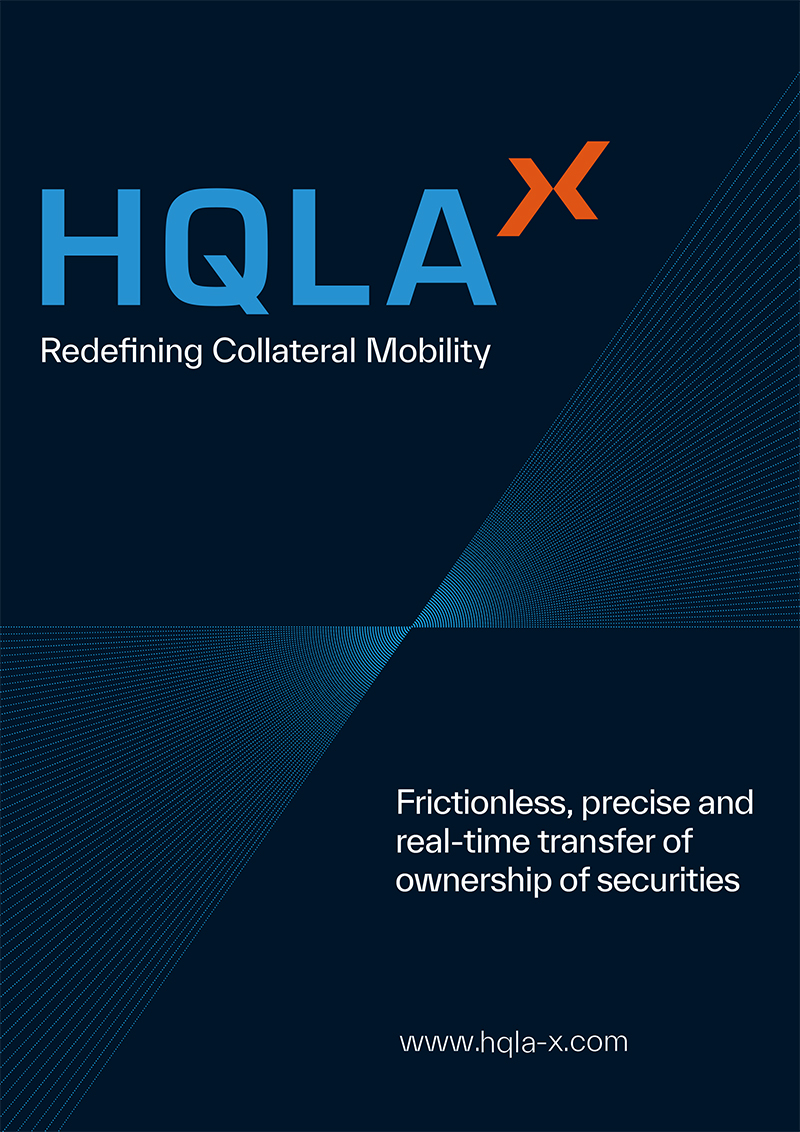Paul Solway, communications officer at PASLA and BNY Mellon’s head of securities finance for Asia, speaks to Carmella Haswell about the opportunities presented across the APAC market, PASLA’s focus for 2023 and how Q1 is shaping up for the industry
Uncertainty remains a common theme for the industry in Q1 2023, as macro headwinds shift from the pandemic to geopolitical strains, while previous pent-up demand spurs inflation and soaring energy prices — not forgetting the ongoing conflict in Eastern Europe. Such uncertainties create equal amounts of risk-on and risk-off activity for the sector, says PASLA communications officer and committee member Paul Solway.
With most of the world having reopened, including Hong Kong, capital mobility is improving once again in 2023, which in turn is fuel-injecting corporate activity. Solway indicates that rising interest rates have been one of the substantial differences shaping the performance of securities lending markets in Q1 2022 versus Q1 2023. While interest rates this time last year were near-zero, today they are pushing 4 per cent in most major countries — with the exception of Japan.
APAC activity and returns have benefited in terms of cash reinvestment premiums, as well as demand for fixed income repo, explains Solway.
He adds: “From a market perspective, Taiwan achieved some fantastic returns in 2022 — with US$490 million in revenues and 288bps in average fees, according to DataLend — and despite having a relative respite so far in 2023, there is every chance that Taiwan will continue to give Japan and Hong Kong stiff competition for the top revenue slot in 2023.”
Unlocking market potential
Opportunities present themselves in streamlining existing markets and opening new markets, according to Solway. “As China reopened its borders faster than expected, we hope this will be similarly reflected in the current financial boundaries and attitudes to incorporating best practices and standards from around the world,” he asserts.
In the Philippines, new securities-based lending (SBL) rules have been “frustratingly slow” to develop through the local authorities as rules remain pending, according to Solway. He hopes that as normality returns, regulatory approvals will accelerate, allowing a more open market to evolve.
Other opportunities present themselves in Indonesia, where PASLA is working with local authorities to open up the market. Bank Indonesia and the Indonesia Stock Market Clearing House (KPEI) has issued new regulations regarding an onshore bilateral SBL facility that aims to match potential borrowers and lenders directly. Under previous SBL arrangements, the borrowing party needed to contact KPEI to initiate the trade, followed by a validation process to match with lenders.
“Despite this offering being largely aimed at domestic participants, PASLA welcomes such progress and will continue to work with local authorities to further open up this exciting market to the offshore community,” Solway states.
Highlighting the impact of demand for high-quality liquid assets (HQLA) on the market globally — which continues to grow at a “phenomenal rate” — Solway notes that access to additional fixed income liquidity in the region is certainly a priority for Japanese and Australian government securities. Where the collateral is being “swapped in”, borrowers and lenders need to be flexible, commercial and pragmatic towards their available inventory pools and risk appetites.
“We look forward to seeing wider demand, appetite and collateral acceptability across the region that will both spur activity, promote liquidity and ultimately bring positive economic growth to the multiplex of jurisdictions within the Asia-Pacific region,” Solway states.
While the demand for HQLA skyrockets, the interest in transitioning to a T+1 settlement also continues across the market globally, with India becoming one of the more recent regions to transition to the shorter settlement cycle. From 27 January 2023, trade-related settlements in India markets will need to be cleared within a day of the transaction.
Speaking about this T+1 migration and the market’s reaction to it, Solway says: “Clearly T+1 settlement cycles are becoming more top-of-mind these days, especially in the US, but such a move is not necessarily a surprise. Asia is already dealing with shortened settlement (e.g. China, T+0) or recall cycles (Taiwan, Singapore, Malaysia) across the region and so risk and operational frameworks are already aligned to lifecycle processes that need to be naturally nimbler and more automated.”
As India remains a principally onshore market with respect to SBL, Solway believes there has been a limited reaction to the shift, given structural and commercial challenges that make it difficult for participants to scale up activity — and therefore liquidity — in this “very nuanced market”.
Adjusting the focus
As the new year gets off to a positive start — S&P Global Market Intelligence report a 34 per cent year-on-year jump in global securities lending revenues for January, generating US$1.117 billion in revenues — firms continue to explore their positioning in the market and set their priorities straight for the following months. For PASLA, advocacy and education plays a key role in influencing the constantly evolving industry across the 10 plus markets in APAC. Therefore, resuming in-person meetings is a focus for the association.
After a four-year hiatus, the Pan-Asia Securities Lending Association (PASLA) and the Risk Management Association (RMA) have welcomed back more than 300 delegates to Tokyo for the 17th Annual Conference on Asian Securities Lending.
The “long overdue reunion” — which will feature Daiwa Institute of Research chairman Hiroshi Nakaso as keynote speaker — is set to provide an essential update on the latest developments for the securities lending market in Asia, what to expect during 2023 and deep dives into the key themes shaping the industry.
Exploring topic highlights for the event, Solway indicates that there will be much discussion on the future of securities finance and the outlook for crypto assets, tokenisation, distributed ledger technology (DLT)-driven repo and digital bonds. Market participants can also expect a regulatory update session, which Solway explains is more important than ever, adding that “Asia is not immune to evolving global standards that impact all participants across the lending chain”.
The Association continues to focus on market evolution in China, which remains an important opportunity for a number of PASLA’s industry participants. Nonetheless, Solway indicates that market activity continues to be split across those who can participate and those who cannot — “due to nuanced and complicated rules and regulations”.
“Evolution does continue, with the Beijing Stock Exchange recently launching securities lending and margin trading (mimicking rules in Shenzhen and Shanghai) but again, the applicability remains firmly aimed at a domestic level with limited expected participation,” Solway explains. “PASLA is keen to continue its engagement and advocacy in 2023 to ensure that all voices are heard, allowing for a more level playing field for both buy- and sell-side players, onshore and offshore.”
PASLA will prioritise commercial netting updates in 2023, in addition to tax work across markets such as Malaysia, Australia and Hong Kong, while environmental, social and governance (ESG) will remain a key lens that the association looks through for all market and industry developments.
The Global Alliance of Securities Lending Associations (GASLA) — which was formed in September 2021 — has focused on developing the next iteration of the Global Framework for ESG and Securities Lending (GFESL). A significant update on the first GFESL will be released and discussed at the PASLA and RMA conference in March. Solway notes: “It is a real synthesis of perspectives from all of the member associations that has been formed by extensive discussion and consultation.”
GASLA anticipates that the next iteration of GFESL will serve two main purposes for the industry. Firstly, it aims to be a valuable, practical reference point and guide for market participants — which was the original aim of GFESL and remains critical, says Solway.
Secondly, it will demonstrate to policymakers and regulators, globally, that ESG integration is a priority for the industry and that the associations are trying to define best practices that align with the policy goals that countries share. “In that respect, we hope it will support deeper engagement with regulators and other stakeholders, such as the UNPRI,” Solway concludes.
As PASLA pursues its priorities for the year, the association’s search for its first CEO continues. Solway explains: “This is clearly a critical appointment for PASLA and we are approaching it very carefully. The skills and background required for this role are also quite exceptional.”
The desired candidate for the role is a person who understands the market and the challenges that practitioners face, in addition to having the ability to mobilise the organisation and achieve results. PASLA is speaking to candidates with a range of different backgrounds and hopes to find the right person soon — for now, the hunt continues.


